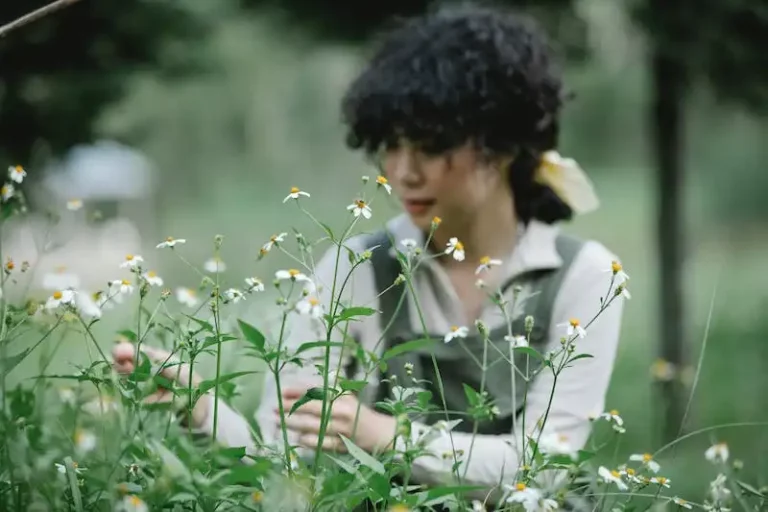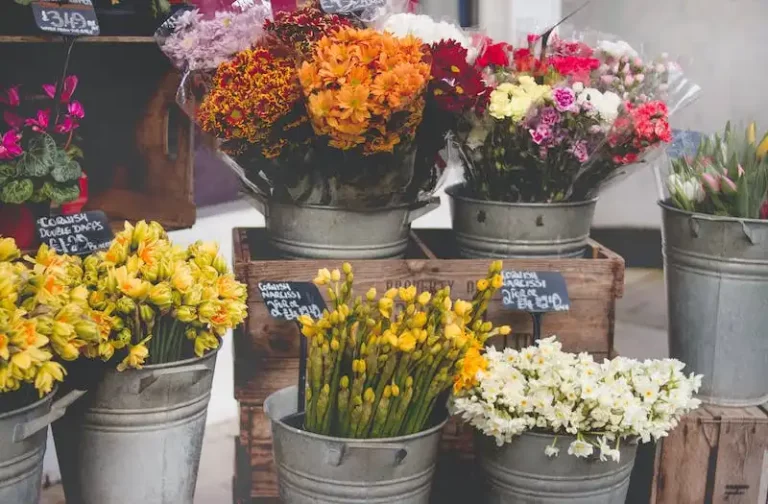There are many different types of cherry trees, each with its own unique characteristics and flavors. Some of the earliest cherry tree varieties to ripen include the Tioga and Weather King cherries. These cherries can be harvested as early as July, allowing gardeners in cooler climates to enjoy fresh cherries within a few months of planting.
Unlike some other fruits, cherry trees generally require a significant amount of chilly weather in order to produce a good crop. In fact, most cherry tree varieties need a certain number of hours of winter chill in order to set fruit. This is known as vernalization, and the requirement varies depending on the variety. Some cherry tree varieties, like the 1-12 Cherry, are particularly hardy and can handle cold temperatures without issue.
One popular cherry tree variety is the Bing cherry. This variety is known for its large size and deep red color. Bing cherries are a favorite among many gardeners and are often enjoyed fresh or used for baking. Another popular variety is the Rainier cherry, which has yellow skin with a red blush. Rainier cherries have a sweet, mild flavor and are often considered a delicacy.
In addition to the Bing and Rainier cherries, there are many other types of cherry trees that gardeners may be interested in growing. Some of these include the Sweetheart cherry, which is a self-pollinating variety that produces large, dark red cherries. The Symphony cherry is another self-pollinating variety that produces dark red cherries with a sweet flavor.
For those interested in growing cherry trees in colder climates, the Montmorency tart cherry is a good choice. This variety is very hardy and can tolerate cold temperatures as low as -30 degrees Fahrenheit. It produces large, bright red cherries that are perfect for making pies and jams.
In addition to the varieties mentioned above, there are many other types of cherry trees that gardeners can choose from. Some of these include the Chokecherry, Balaton, Lapins, and Maraschino cherries. Each of these cherry tree varieties has its own unique characteristics and flavors, making them a popular choice for home gardeners.
When it comes to growing cherry trees, it is important to choose the right variety for your climate and growing conditions. Cherry trees generally grow best in moderate to cold climates and require moist, well-drained soil. They also prefer full sun but can tolerate some shade.
In conclusion, there are many different types of cherry trees to choose from, each with its own unique characteristics and flavors. Whether you prefer sweet or sour cherries, there is a cherry tree variety that is sure to suit your taste. From the early blooming and extra-early harvesting of the Bing cherry to the late blooming and productivity of the Lapins cherry, there is a cherry tree for every gardening enthusiast.
Cherry tree varieties
There are numerous cherry tree varieties that produce deliciously moist cherries during the summer season. These include:
- The Provence Cherry Tree, which is harvested in late June and has a sweet and tangy flavor
- The Van Cherry Tree, a popular British variety known for its multiple uses, including eating fresh, juicing, and canning
- The Bing Cherry Tree, a Californian variety that is self-pollinating and mainly used for eating fresh
- The Autumnalis Cherry Tree, which blooms in both spring and autumn and is a cross between the Bigi and Republican varieties
- The Sandon Rose Cherry Tree, known for its resistance to diseases and pests
- The Lambert Cherry Tree, which is harvested in late August and thanks to its juicy and crunchy texture, is popular for eating fresh and preserving
- The Satin Moon Cherry Tree, which produces larger cherries and is resistant to diseases
- The Carmen Cherry Tree, a newer variety known for its heart-shaped cherries and resistance to diseases
- The Cristalina Cherry Tree, originally from Romania, produces cherries that are sweet and juicy
- The Ann Mariant Cherry Tree, which is mainly used as a cross-pollinator and has black cherries
- The Yoshino Cherry Tree, known for its highly ornamental Yoshinos variety and later season cherries
- The New Star Cherry Tree, which has deep red cherries and is highly resistant to diseases
- The Colorado Cherry Tree, a large variety with stunning foliage and used for both ornamental and fruit purposes
- The What’s That Cherry Tree, a variety that produces heart-shaped cherries and is mainly used for culinary purposes
- The Skeena Cherry Tree, which is harvested in early July and has a rich and sweet flavor
Each cherry tree variety has its own unique characteristics and flavors, making them suitable for different climates and taste preferences. Whether you prefer sweet or tart cherries, there is a cherry tree variety that will satisfy your taste buds throughout the year.
Extra-Early cherry varieties
Extra-early cherry varieties are known for their ability to produce fruit earlier in the season than other cherry tree varieties. These cherry trees typically bloom and produce fruit in early spring, allowing for an early harvest.
| Variety | Recommended for | Description |
|---|---|---|
| Autumnalis | All regions | A small tree known for its ability to bloom in autumn and winter. Its pink-white petals and deep green foliage make it an attractive choice for any garden. |
| Bigi | East regions | A variety with large, heart-shaped fruit that ripens in early summer. The cherries are firm and have a deep-red color. |
| Cristalina | All regions | This variety is known for its excellent flavor and versatility. The cherries are medium-sized with a whitegold color and are harvested in early summer. |
| Higan (‘Autumnalis’) | All regions | A small tree that produces deep-red cherries in early spring and autumn. Its resistance to frosts makes it a reliable choice in colder climates. |
| Jerte | All regions | A famous variety from the Jerte Valley in Spain, known for its dark red, firm cherries. It is typically harvested in late spring. |
| Meteor | All regions | A compact tree with excellent frost resistance. The cherries are small and deep red, making them perfect for snacking or baking. |
| Negro | All regions | This variety produces firm, dark red cherries that are ready for harvest in early summer. Its sweet flesh makes it a popular choice for eating fresh. |
| Pico | All regions | A versatile variety that can be harvested early in the season for sour cherries or left to ripen for sweet cherries. It is known for its resistance to diseases. |
| Red Yard | All regions | This variety is known for its larger size and sweet, juicy flesh. It is typically ready for harvest in early summer and is a favorite for making preserves. |
| Santina | All regions | A heavy-bearing tree that produces large, dark red cherries. It is well-suited for all regions and is typically harvested in early summer. |
| Starking | All regions | A popular variety known for its large, dark red cherries. It grows well in all regions and is typically ready for harvest in early summer. |
| Star | All regions | This variety produces bright red cherries with a sweet and tangy flavor. It is typically harvested in early summer and is excellent for eating fresh or making jams. |
| Summit | All regions | A versatile variety that is well-suited for all regions. The cherries are firm and have a deep red color. They are typically harvested in early summer. |
| Tulare | All regions | A variety that produces large, dark red cherries. It is known for its excellent flavor and is typically harvested in early summer. |
| Yoshino | All regions | A tree that is capable of producing fruit throughout the summer. The cherries have a deep red color and are known for their sweet flavor. |
Cristobalina
The Cristobalina variety of cherry trees is an excellent addition to any garden. These trees are mainly known for their sweet and crunchy cherries, making them a favorite among gardeners. They are also highly prized for their early blossoming, producing beautiful white flowers that add beauty and color to any garden.
The Cristobalina cherry trees have a symmetrical and upright growth habit, allowing them to fit well in any garden space. They can reach a height of 21 feet and a width of 19 feet, making them suitable for both small and larger gardens. These trees are cold-hardy and can thrive in various climates, including the northern regions.
One of the unique features of the Cristobalina cherry trees is their extra-early fruiting capacity. The cherries begin to ripen in June, giving gardeners the opportunity to enjoy fresh cherries before other varieties start producing. The cherries of the Cristobalina variety have a deep red color, similar to the Montmorency cherries. They have a sweet and tart flavor, making them perfect for fresh eating, baking, or making preserves.
These cherry trees require well-drained soil and full sun exposure for optimum growth and fruit production. They can tolerate a wide range of soil types, including sandy or clay soils, as long as they are well-drained. The Cristobalina variety is also relatively disease-resistant, making them a low-maintenance option for gardeners.
It is important to note that all parts of the Cristobalina cherry tree, including the leaves and seeds, are poisonous to humans and animals. Extra care should be taken to keep children and pets away from these trees to avoid ingestion of any plant parts.
The Cristobalina cherry trees are an excellent choice for gardeners who are interested in adding an early fruiting and visually appealing variety to their garden. Whether you are considering planting it for its sweet cherries, its early blossoming, or its symmetrical growth habit, the Cristobalina cherry tree is sure to bring beauty and interest to any garden.




